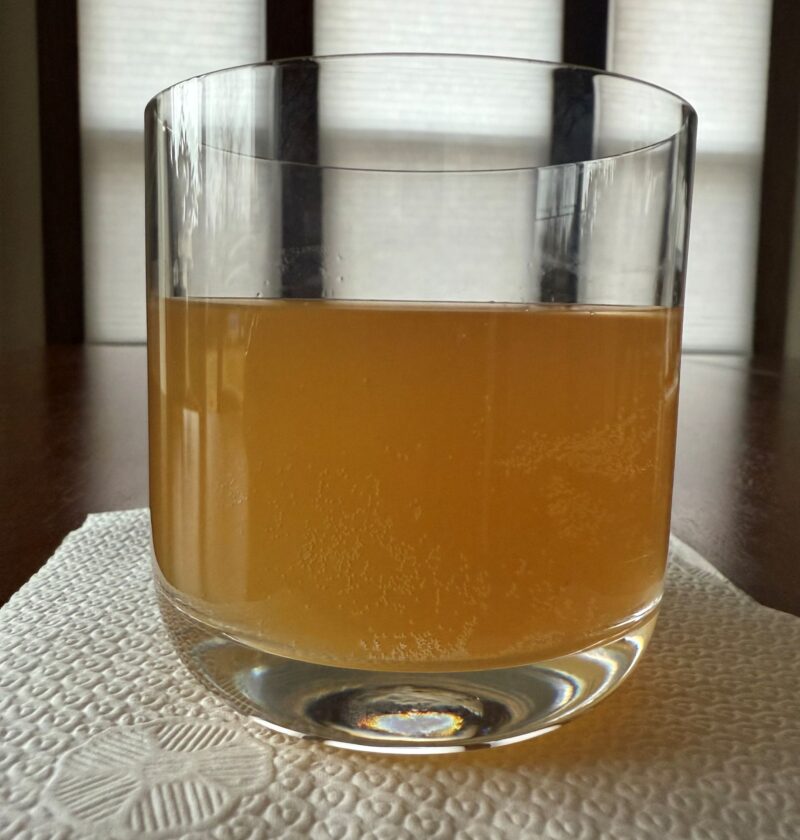
Homemade kombucha is simple and rewarding. It requires very few ingredients and tools. If you’re on this page, you’re likely already a fan. You don’t need an introduction to the history and benefits of this wonderful drink. You’re probably trying to figure out how to make it more cost-effectively. Store-bought kombucha can be expensive and sometimes contains too much sugar or unappealing flavors. I promise you, this will become your go-to homemade kombucha recipe.
Ingredients
Instructions
- Thoroughly wash and dry a 1-gallon (3.79 l) jar. Boil 2-3 cups of water. Using a tea ball or tea infuser, measure 3 tablespoons of black loose-leaf tea and immerse them in boiling water. Let the tea brew for 10-15 minutes. Remove the tea ball and add sugar. Stir until dissolved, then pour the tea into the jar.
- Obtain your SCOBY. Fill up the jar with filtered water, leaving about 2 inches (ca. 5 cm) of free space at the top. Check the temperature. Before adding a SCOBY to your kombucha brew, ensure the water temperature is around room temperature, ideally between 68 °F (ca. 20 °C) and 85 °F (ca. 29 °C). Add SCOBY, cover the jar with the cloth, secure it with a rubber band, and set it aside in a warm place.
- This begins the first phase of fermentation, which should last between 7 and 14 days. After at least 7 days, the second fermentation can be initiated. Start with removing the SCOBY and placing it in a bowl. This is also the time to flavor your kombucha if desired. A recommended method is to add 5–6 strips of peeled fresh ginger and 2 teaspoons of honey. Pour the kombucha into glass bottles. Secure the cap tightly and let the kombucha brew for another week. Refrigerate to stop the fermentation process, then enjoy your healthy, fizzy drink. Preserving the SCOBY
- Store in a suitable container: Place the SCOBY in a glass or food-grade plastic container with a wide opening, such as a jar or bowl. Cover with liquid: Add enough brewed kombucha tea or a mixture of distilled vinegar and sweet tea to cover the SCOBY completely. This helps maintain the acidic pH level necessary for the SCOBY's survival and keeps it hydrated. Ensure adequate temperature: Keep the container in a warm, dark place with a consistent temperature between 68 °F (ca. 20 °C) and 85 °F (20°C and 30°C). Avoid direct sunlight or extreme temperature fluctuations. Allow airflow: Secure the container's opening with a breathable material, such as cheesecloth or a paper towel, to allow airflow while preventing contaminants from entering. Use a rubber band to keep the covering in place. Check and maintain liquid level: Periodically check the SCOBY and ensure that it remains submerged in liquid. If the liquid level drops, add more brewed kombucha tea or the distilled vinegar and sweet tea mixture to maintain coverage. Feed and maintain: Every 4–6 weeks, replace the liquid with fresh brewed kombucha tea or the vinegar and sweet tea mixture to provide nutrients and maintain the proper environment for your SCOBY. Monitor health: Inspect your SCOBY regularly for signs of mold or other issues. A healthy SCOBY should be creamy white, light brown, or yellowish with a smooth, slightly slippery texture. Discard any SCOBY with mold or a foul odor, and start over with a new one. By following these guidelines, you'll ensure that your SCOBY remains healthy and active, ready to brew delicious kombucha whenever you're ready.
Notes
Please note that kombucha may not be suitable for everyone, as some people may experience discomfort after drinking it. An essential aspect of making homemade kombucha is maintaining clean equipment to prevent the growth of unwanted bacteria.
